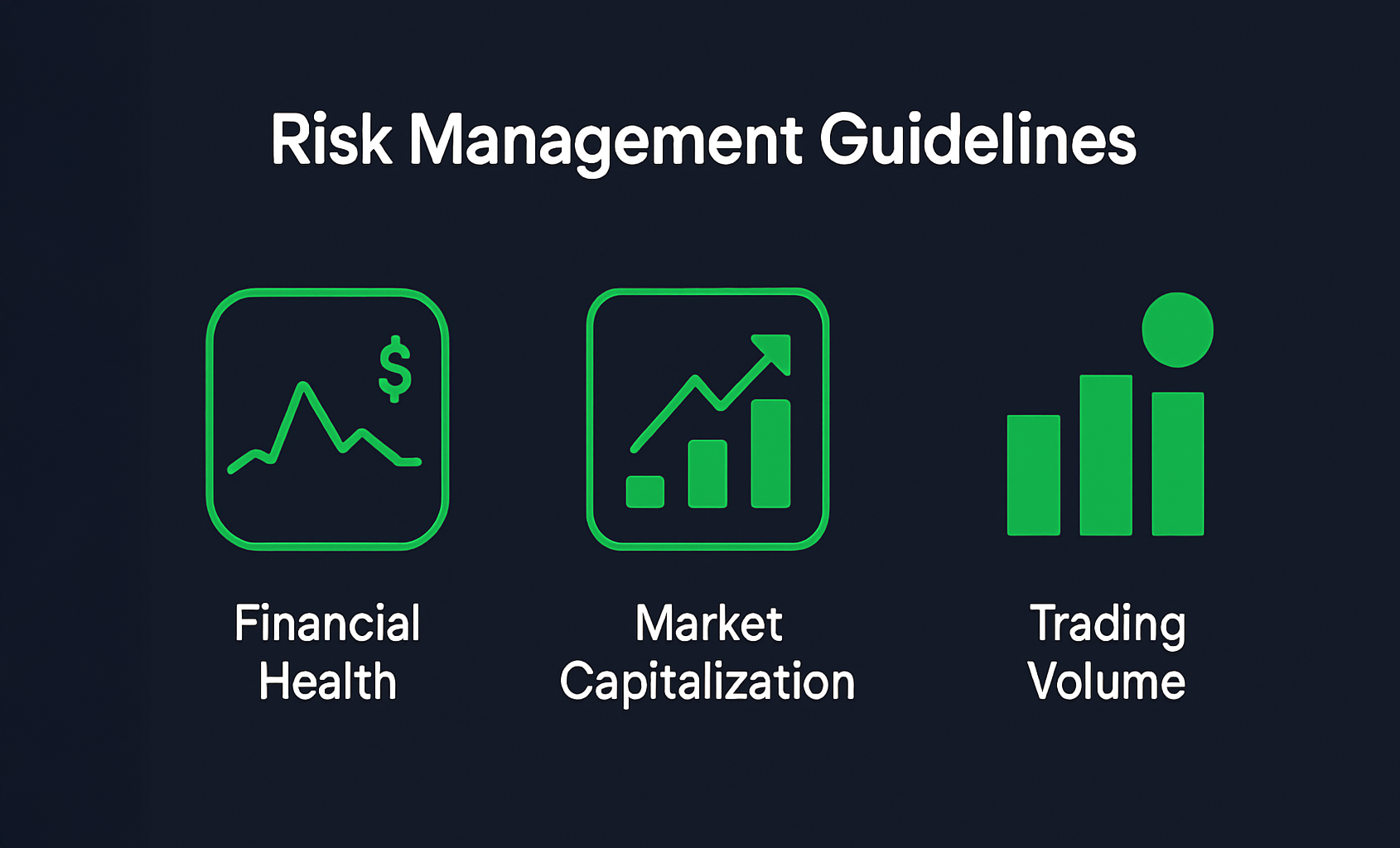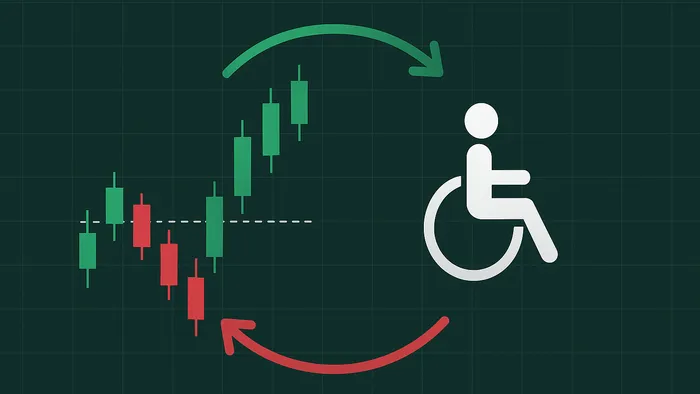Learn how to generate consistent income with the Wheel Strategy, a practical approach using options trading for steady cash flow.
The Wheel Strategy is a simple way to generate steady income using options trading. Here's how it works:
- Sell Cash-Secured Puts: Earn premiums while setting a potential stock purchase price.
- Buy Shares if Assigned: If the stock price drops below your chosen strike, you buy 100 shares per contract.
- Sell Covered Calls: Once you own the shares, sell calls to earn more premiums.
- Repeat the Cycle: If shares are sold, start over with cash-secured puts.
Why Use the Wheel Strategy?
- Steady Income: Collect premiums from puts and calls.
- Lower Stock Costs: Premiums reduce your stock purchase price.
- Risk Management: Works best with high-quality, stable stocks.
This strategy is ideal for patient traders and long-term investors who want consistent cash flow while holding strong, liquid stocks.
Ready to dive in? The article breaks down each step and key tips for success.
4 Steps of the Wheel Strategy
1. Selling Cash-Secured Puts
Start by selling cash-secured puts on stocks you’re interested in. This step generates upfront income and sets a clear entry price for the stock.
Here’s what to keep in mind:
- Strike Price: Pick a strike price near key support levels. For example, if Apple is trading at $175 with support at $165, choose the $165 strike.
- Cash on Hand: Make sure you have enough cash to buy 100 shares at the strike price. For a $165 strike, that’s $16 500.
- Premiums: Look for options with a delta close to –0.40, which indicates about a 40 percent chance of assignment.
If the stock is assigned, you’ll move to the next step, owning the shares.
2. Stock Assignment
Assignment happens when the stock price drops below your put’s strike price at expiration.
Key actions:
- Keep an eye on the stock’s price as expiration approaches and confirm you have enough funds to purchase the shares.
- Recalculate your cost basis by subtracting the premium received from the strike price. This will help you plan your next move, which is writing covered calls.
3. Writing Covered Calls
Once you own the shares, you can write covered calls to generate more income.
For example, if you own XYZ stock at $50 and expect it to rise to $60, you could sell a covered call with a $55 strike. If you collect a $4 premium, you’d earn $5 from stock appreciation and $4 from the premium, yielding a total return of about 18 percent over six months.
4. Restarting the Cycle
If your shares are called away, it’s time to reset and start the process again. Adjust your approach based on your results:
- Position Size: Reassess based on how the last cycle performed.
- Strike Price: Fine-tune your strike price choices according to the stock’s behavior.
- Premium Goals: Set realistic premium targets informed by past cycles.
Keep a detailed record of your trades and adapt to market conditions to maintain steady income while managing risk effectively.
Risk Management Guidelines

Stock Selection Criteria
Focus on large-cap companies with a history of stable performance. Here's what to look for:
- Financial Health: Pick companies with strong balance sheets and steady earnings growth.
- Market Capitalization: Stick with large-cap stocks for better liquidity.
- Trading Volume: Ensure the stock has high trading activity.
- Options Liquidity: Look for options with tight bid-ask spreads and high volume.
- Sector Stability: Prioritize companies in sectors like consumer staples, healthcare, and utilities, which tend to be less volatile.
Risk-Reward Analysis
The Wheel Strategy combines potential stock ownership with income generation through premiums. To maintain steady returns and protect your capital, it's essential to understand the balance between risk and reward.
For instance, if you sell a put with a $50 strike price and receive a $2 premium:
- Maximum Profit: $200 (the premium you receive)
- Maximum Risk: $4 800 (the $5 000 assignment cost minus the $200 premium)
- Return on Risk: 4.17 percent
This calculation helps you evaluate if the trade aligns with your risk tolerance and return goals.
Options Greeks Analysis
Understanding the options Greeks can help you better manage your positions and gauge assignment probabilities.
Delta Management:
- Aim for a delta between –0.20 and –0.40 when selling puts.
- A higher delta increases the premium but also raises the likelihood of assignment.
- A lower delta reduces assignment risk but comes with a smaller premium.
Theta Considerations:
- Focus on options with 30-45 days until expiration.
- Time decay speeds up as expiration nears, so balance premium collection with the risk of sharp price movements (gamma risk).
Position Adjustments:
- Keep an eye on delta as the stock price changes.
- Adjust or roll positions if delta moves beyond your comfort level.
- Stick to consistent position sizes.
- Hold enough cash to cover potential stock assignments.
The Wheel Strategy generally benefits from rising stock prices (long delta) but can face challenges as delta shifts due to price fluctuations (short gamma). These principles are key to managing risk effectively as you implement the strategy.
The Wheel Strategy: Beginner's Tutorial
Strategy Implementation Guide
This guide explains how to apply the Wheel Strategy, building on the risk management principles discussed earlier.
Step-by-Step Trade Example
Example: ExxonMobil (XOM)
- Initial Cash-Secured Put
Let’s say XOM is trading at $110 per share. You sell a 30-day cash-secured put option with a $110 strike price, earning a $2 per share premium (a total of $200 for one contract). You set aside $11 000 as collateral. - Assignment Scenario
If XOM drops below the $110 strike, for example to $100, the put is exercised and you’re assigned 100 shares at $110. You still keep the $2 premium. - Covered Call Phase
After assignment, you sell a 30-day covered call with a $115 strike price, collecting a $5 premium. - Position Resolution
If XOM rises above $115 by expiration, your shares are called away. In this cycle you earn $10 per share: the $5 premium from the call plus the $5 difference between the $115 strike and your $110 purchase price.
This process demonstrates the strategy’s repeatable nature, combining trade execution with risk and position management.
Problem-Solving Tips
Here’s how to adjust your position when challenges arise:
| Scenario | Action | Benefit |
|---|---|---|
| Stock near strike | Roll the put down and out | Collect extra premium and reduce the risk of assignment |
| Sharp decline | Accept assignment and sell covered calls | Lower your cost basis through additional premium income |
| High volatility | Reduce position size | Keep market exposure manageable during uncertain conditions |
Position Management Guidelines
- Use stop-loss orders to limit losses during sharp downturns.
- Maintain cash reserves that align with your maximum exposure limits.
LuxAlgo Tools Integration
Take your Wheel Strategy to the next level with LuxAlgo’s tools, designed to streamline trade execution and risk adjustments.
Price Action Concepts (PAC) Toolkit
- Automatically detects patterns to identify better entry points.
- Highlights key support and resistance levels to guide strike price decisions.
Signals & Overlays Toolkit
- Sends real-time alerts for scenarios like potential assignment.
- Helps time rollovers and other position adjustments effectively.
- Simulates your Wheel Strategy under various market conditions.
- Optimizes strike price choices and position sizing.
- Identifies stocks with strong potential for consistent income.
To get the best results, use LuxAlgo’s screeners to find stocks with solid fundamentals and liquid options markets. These tools simplify the process and enhance your decision-making.
Conclusion: Strategy Overview
The Wheel Strategy offers a structured way to generate steady cash flow through options trading, specifically using cash-secured puts and covered calls. It focuses on earning regular income through premiums while maintaining disciplined risk management.
Key factors for success include:
- Stock Selection: Pick stable, fundamentally strong stocks with high liquidity (ones you’d be comfortable holding for the long haul). Prioritize companies with a solid market reputation and consistent performance.
- Risk Management: Set clear stop-loss levels, generally 10-15 percent below the original put sale price.
- Income Generation: Keep an eye on the premium income from both put and call sales, as this directly supports the income-focused nature of the strategy.
Tools to Support Your Strategy
LuxAlgo provides resources to streamline your execution, including:
- The Price Action Concepts toolkit for tracking market conditions,
- Automated alerts to help manage potential assignments,
- AI-powered backtesting to fine-tune strike prices and position sizes.
This strategy’s strength lies in its consistent and repeatable process. It requires patience and the ability to adjust as market conditions shift over time.
FAQs
How does the Wheel Strategy help manage risk in options trading?
The Wheel Strategy is designed with several risk management features to help protect your investments while generating consistent income.
It starts with cash-secured puts, ensuring you have enough cash to buy the underlying stock if assigned, which reduces the risk of overleveraging. Selecting stable, fundamentally strong stocks can help minimize the chance of significant price drops.
The strategy also generates premium income from selling puts and calls, which can offset potential losses. Many traders set stop-loss levels, such as 10-15 percent below the stock price when selling puts. Finally, keeping positions appropriately sized ensures you’re trading within your financial comfort zone and that market conditions with moderate volatility can enhance the strategy’s effectiveness.
What types of stocks work best for the Wheel Strategy?
The best stocks for the Wheel Strategy are stable, well-established companies or ETFs with high liquidity and predictable price movements. Examples include large-cap stocks like Microsoft (MSFT) or Coca-Cola (KO), as well as widely traded ETFs such as SPY and QQQ.
Look for stocks with strong financials, consistent performance, and manageable volatility. Companies that pay reliable dividends can also enhance your returns while holding the stock, making them ideal for this strategy.
How can LuxAlgo tools help traders implement the Wheel Strategy effectively?
LuxAlgo tools enhance your execution of the Wheel Strategy by providing data-driven insights and visual indicators that simplify decision-making. LuxAlgo’s customizable indicators can help identify optimal entry and exit points when selling cash-secured puts and covered calls, ensuring you make informed trades.
Additionally, LuxAlgo’s tools support risk management by offering features like trend detection and momentum analysis, which help you assess market conditions and adjust your strategy accordingly. These insights are valuable for both beginners and experienced traders looking to generate consistent cash flow through options trading.








